Filter by

Vessel Health and Preservation: The Right Approach for Vascular Access
This Open access book offers updated and revised information on vessel health and preservation (VHP), a model concept first published in poster form in 2008 and in JVA in 2012, which has received a great deal of attention, especially in the US, UK and Australia. The book presents a model and a new way of thinking applied to vascular access and administration of intravenous treatment, and …
- Edition
- 1
- ISBN/ISSN
- 9783030031497
- Collation
- https://doi.org/10.1007/978-3-030-03149-7 hlm,: ill, lamp;
- Series Title
- -
- Call Number
- -
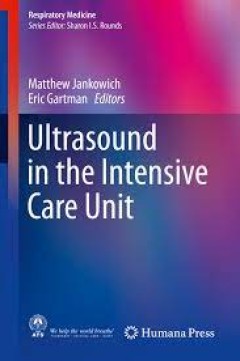
Ultrasound in the Intensive Care Unit
Ultrasound in the Intensive Care Unit explores the current state of evidence supporting use of bedside ultrasound for procedural guidance and for the critical care-focused assessment of a variety of organ systems. This text covers standard practice areas, such as ultrasound guidance for vascular access in the ICU, as well as novel, less well-known applications such as the use of ultrasound for …
- Edition
- -
- ISBN/ISSN
- 978-1-4939-1723-5
- Collation
- -
- Series Title
- -
- Call Number
- -
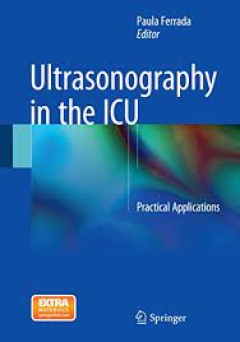
Ultrasonography in the ICU Practical Applications
This text presents a basic guide of the principles and applications of ultrasound in the critical care setting. The text also addresses the basic and clinical uses of ultrasound, including clinical cases at the end of each of the 7 sections of the clinical subdivisions. The final chapters focus on the issues of training, certification, credentialing and billing. These discussions make the text …
- Edition
- -
- ISBN/ISSN
- 978-3-319-11876-5
- Collation
- -
- Series Title
- -
- Call Number
- -
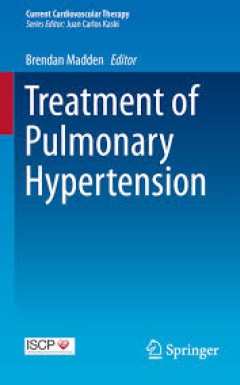
Treatment of Pulmonary Hypertension
This title will be presented as highly practical information on pharmaceutical options in pulmonary hypertension, written in a quick-access, no-nonsense format. The emphasis will be on a just-the-facts clinical approach, heavy on tabular material, light on dense prose. The involvement of the ISCP will ensure that the best quality contributors will be involved and establish a consistent appro…
- Edition
- -
- ISBN/ISSN
- 978-3-319-13581-6
- Collation
- -
- Series Title
- -
- Call Number
- -
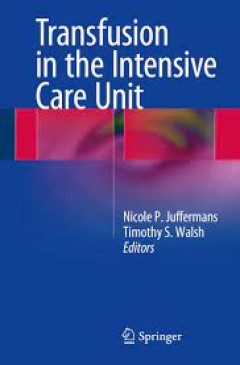
Transfusion in the Intensive Care Unit
Due to a high incidence of anemia, critically ill patients are frequently transfused, with up to 40% of patients receiving a transfusion during their stay in the Intensive Care Unit. It has become increasingly clear that there is an association between transfusion and adverse outcomes, underlining the need for a careful assessment of the risks and benefits of a blood transfusion. In the last de…
- Edition
- -
- ISBN/ISSN
- 978-3-319-08735-1
- Collation
- -
- Series Title
- -
- Call Number
- -
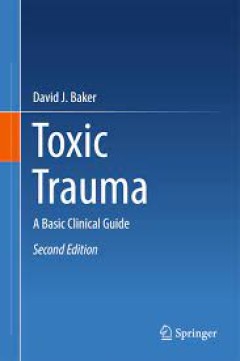
Toxic Trauma A Basic Clinical Guide
Winner of BMA Medical Book Award, Highly Commended in Public Health Written for medical professionals, this book provides a concise reference with clear guidelines on how to manage both the victims of chemical agent exposure and the site of the incident. David Baker considers the nature and basic science of the hazards faced as well as the practical management of persons exposed to chemicals…
- Edition
- -
- ISBN/ISSN
- 978-3-319-40916-0
- Collation
- -
- Series Title
- -
- Call Number
- -

Thrombolysis in Pulmonary Embolism
This book provides an up-to-date review of the use of thrombolytic therapy in the treatment of acute pulmonary embolism. It discusses the mechanisms of thrombosis; pharmacokinetics and pharmacodynamics of the most commonly used fibrinolytics; evidence-based results from multicenter control trials in which thrombolytic treatment was administered; criteria by which pulmonary embolism patients req…
- Edition
- -
- ISBN/ISSN
- 978-3-319-19707-4
- Collation
- -
- Series Title
- -
- Call Number
- -
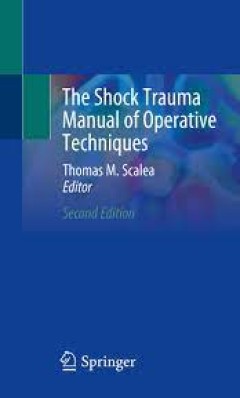
The Shock Trauma Manual of Operative Techniques
This manual provides a practical approach to operative trauma management. Written entirely by physicians who currently practice in shock trauma, the manual features a hands-on approach and practice to dealing with shock trauma that is regularly utilized by the faculty at the R Adams Cowley Shock Trauma Center. The volume includes numerous photographs that illustrate operative techniques in grea…
- Edition
- -
- ISBN/ISSN
- 978-1-4939-2371-7
- Collation
- -
- Series Title
- -
- Call Number
- -
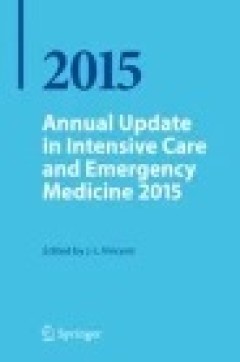
Annual Update in Intensive Care and Emergency Medicine 2015
The Yearbook compiles the most recent developments in experimental and clinical research and practice in one comprehensive reference book. The chapters are written by well recognized experts in the field of intensive care and emergency medicine. It is addressed to everyone involved in internal medicine, anesthesia, surgery, pediatrics, intensive care and emergency medicine.
- Edition
- Ed. 1
- ISBN/ISSN
- 978-3-319-13761-2
- Collation
- XI, 602
- Series Title
- Annual Update in Intensive Care and Emergency Medicine
- Call Number
- 613 ANN a
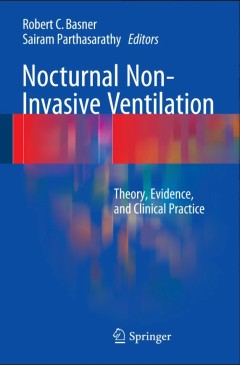
Nocturnal Non-Invasive Ventilation:Theory, Evidence, and Clinical Practice
This comprehensive resource brings together the most current theories, evidence and best practice parameters for the use of nocturnal non-invasive ventilation (nNIV). Chapters focus on the application of acute and chronic nNIV in patients with cardio-respiratory disorders over a range of major medical settings. Updates on past and recent research in this field are highlighted. Authored by leadi…
- Edition
- 1
- ISBN/ISSN
- 978-1-4899-7623-9
- Collation
- X, 272
- Series Title
- -
- Call Number
- -
 Computer Science, Information & General Works
Computer Science, Information & General Works  Philosophy & Psychology
Philosophy & Psychology  Religion
Religion  Social Sciences
Social Sciences  Language
Language  Pure Science
Pure Science  Applied Sciences
Applied Sciences  Art & Recreation
Art & Recreation  Literature
Literature  History & Geography
History & Geography